Darryl Cherney and Judi Bari were both members of the IWW at the time.
http://www.insidebayarea.com/oaklandtribune/localnews/ci_16025546
SAN FRANCISCO — The survivor of an Oakland car bombing reopened a 20-year-old case Wednesday when he asked a federal judge to bar the FBI from destroying bomb fragments he argued could contain evidence.
Authorities this week said they exhausted all leads and notified the lawyers that evidence from the bombing would be destroyed. Judge James Larsen ordered the FBI to preserve the evidence until the court decides how to resolve the issue.
The Earth First activist, Darryl Cherney, claimed the FBI still has two sets of bomb remnants that could contain DNA evidence, as well as a hand-lettered sign and duct tape. The evidence could lead authorities to the identity of the person who planted a bomb in Cherney’s car, which exploded in Oakland two decades ago.
Lawyers for Cherney filed the motion Wednesday before U.S. District Judge James Larsen.
Cherney won a $4.4 million lawsuit against the FBI and Oakland police for civil rights violations committed against him and fellow Earth First organizer Judi Bari related to the bombing.
The two were on their way to a Save the Redwoods Festival in Santa Cruz when the bomb exploded May 24, 1990.
The blast ripped through the floorboard, seriously injuring Bari. Cherney suffered minor injuries.
Oakland police and the FBI claimed the couple made the bomb. They said the bomb exploded accidentally and arrested Cherney and Bari on felony explosive charges. The FBI later admitted the bomb was not in the back seat as agents previously stated but that it was placed under the driver’s seat, according to a KGO Radio report.
Also, the nails in the bomb did not match others found in other parts of the car.
The charges against Bari and Cherney were later dropped by the Alameda County district attorney, who cited insufficient evidence to proceed further. Bari died of cancer in 1997.
Both charged that the FBI and Oakland police never conducted a thorough investigation, targeting only Bari and Cherney as suspects. A federal jury awarded $4.4 million to Cherney and Bari’s estate in 2002. Jury members said their civil rights were violated when the FBI and Oakland police arrested them and illegally searched their homes.
http://www.sfgate.com/cgi-bin/article.cgi?f=/c/a/2010/09/08/BANR1FAM6L.DTL
(09-08) 16:54 PDT SAN FRANCISCO — It’s an infamous case that never seems to go away, even after millions of dollars have been paid out in civil settlements and police say the trail has gone cold.
The case is the 1990 bombing in Oakland of Earth First environmental activists Judi Bari and Darryl Cherney, who were nearly killed when a nail-studded explosive device blew up in their car.
Nobody was ever charged with the attack, and now, two decades later, the FBI wants to destroy the last bits of evidence it has been storing ever since the investigation dribbled dry – remnants of the bomb and one like it that blew up in a North Bay town a few days earlier.
Not so fast, says Cherney, 54, who has never given up trying to solve the case himself.
Saying in court briefs that the evidence “provides the last best hope for learning who bombed Judi Bari,” Cherney and his lawyers were in federal court Wednesday in San Francisco to try to force the FBI to turn the evidence over to them so they can run DNA and other tests on it.
They managed to get U.S. Magistrate Judge James Larson to order the evidence preserved for 30 days while he decides its fate, but the judge indicated the clock is ticking fast – and not in Cherney’s favor.
Maintaining interest
“Frankly, I think it would behoove your side to talk to someone in the attorney general’s office to see if they can get interested in this,” Larson told Cherney’s attorney, Dennis Cunningham, referring to the U.S. attorney general’s office.
The idea would be for federal authorities – or anyone involved in investigating the bombing two decades ago – to reopen the case, or at least indicate enough interest to want to hang on to the FBI’s evidence.
Failing that, the judge seemed inclined to let the agency go ahead and destroy the pieces of the explosives. He did say, however, that he would do more research and consult with those who previously dealt with the issue in court before he makes his decision.
‘Hard to accept’
That gave Cherney’s backers hope, and they said Wednesday they would be checking with investigators and prosecutors to see if anyone wants to take possession of the bomb bits.
“There’s no reason they can’t keep these two boxes,” Cunningham said. “It’s hard to accept that these things have no more use when the bomber or bombers have never been found.”
At issue are the remnants of the bomb that blew up in Bari’s car on May 24, 1990, on Park Boulevard, and of a similar device that partially exploded in Cloverdale on May 9. The Cloverdale bomb exploded at the Louisiana-Pacific Corp. mill, causing minimal damage, and was accompanied by a cardboard sign reading, “LP screws mill workers.”
Both bombs are presumed to have been made by the same person – someone who sent a letter to the Santa Rosa Press Democrat, signing it as “the Lord’s Avenger” and giving details that law enforcement said only the bomber would know. The evidence is being kept in two boxes in an FBI storage room in San Francisco.
Fingerprints sought
“We need to be able to look at these bomb parts, do DNA testing on them, use them to try to find out who bombed us,” Cherney, who lives in Garberville (Humboldt County), said after the hearing. By trying to destroy the parts, he said, “the FBI is running cover for the bomber.”
He said he also wants copies of two fingerprints lifted from evidence in the case that investigators said never yielded a solid lead.
The likelihood that another agency will want to take over the evidence or reopen the case seems slim. Representatives of the Oakland Police Department and FBI said they consider the case closed, as did Assistant U.S. Attorney Joseph Sher when he argued on the FBI’s behalf Wednesday in court.
“We see no reason for this evidence to be retained,” Sher said after the hearing. “The investigation is done.”
The FBI, he added, doesn’t routinely hand over evidence to private citizens, especially not bombs.
Cherney and Bari were injured when the bomb, located on the floor behind the driver’s seat of her Subaru station wagon, exploded as the two were headed to a rally to begin a campaign of protests to protect old-growth forests, called Redwood Summer.
Investigators promptly branded the two as eco-terrorists, and Cherney and Bari were soon arrested on suspicion of having cobbled up the bomb themselves. But prosecutors dropped the case weeks later.
Successful civil lawsuit
The pair filed a civil lawsuit against the FBI and the Oakland Police Department for false arrest and slander. Although Bari died of cancer in 1997, Cherney pursued the case until he won a $4 million settlement in 2004 from the agencies. He split the money with Bari’s estate.
“I want to make it clear,” said Cherney, who is still with Earth First. “We are going to get those bomb components. If they’re done, hand them over.”
E-mail Kevin Fagan at kfagan@sfchronicle.com.
Read more: http://www.sfgate.com/cgi-bin/article.cgi?f=/c/a/2010/09/08/BANR1FAM6L.DTL#ixzz0z0xTGRxF

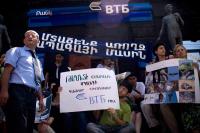 29.07.10
29.07.10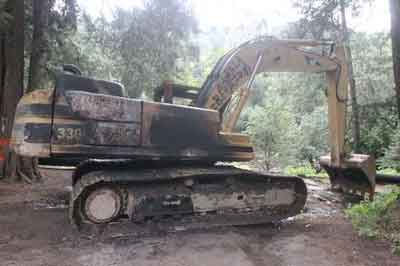 On the night of July 27 we made a bonfire with property belonging to destroyers of the Earth.
On the night of July 27 we made a bonfire with property belonging to destroyers of the Earth.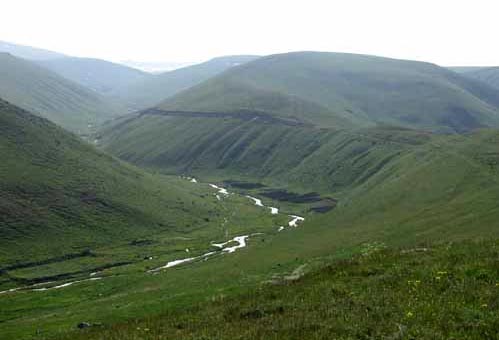 A live shield appeared yesterday, July 19, on the Yerevan-Sevan highway, when the residents of the Gegharkunik province blocked the road to express their protest against the construction of a hydropower plant on the Gayladzor stream of the Argitchi River.
A live shield appeared yesterday, July 19, on the Yerevan-Sevan highway, when the residents of the Gegharkunik province blocked the road to express their protest against the construction of a hydropower plant on the Gayladzor stream of the Argitchi River.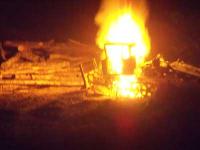 received anonymously:
received anonymously: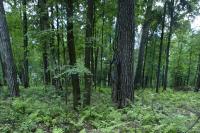
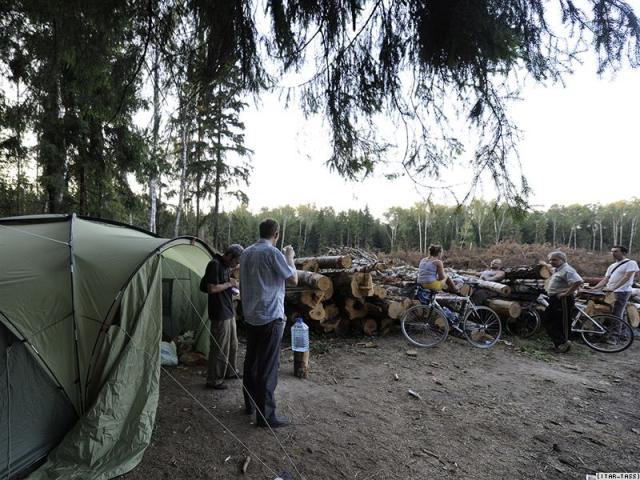 July 17, 2010
July 17, 2010